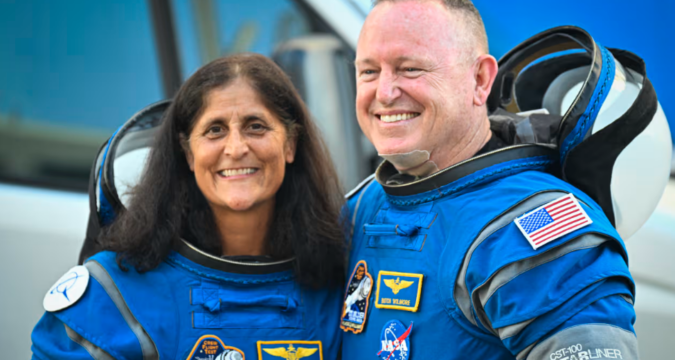
NASA said on Saturday that astronauts Butch Wilmore and Suni Williams will not be returning Boeing’s Starliner to Earth. Without putting the crew at unnecessary risk, the unmanned return enables NASA and Boeing to continue collecting test data on Starliner before it makes its next journey home.
Wilmore and Williams have been hard at work supporting station research, maintenance, Starliner system testing, and data processing, among other things. They were part of NASA’s Boeing Crew Flight Test that took them to the International Space Station in June.
Even when spaceflight is the safest and most routine, it is still risky. By its very nature, a test flight is neither routine nor safe. “We made the decision to keep Butch and Suni aboard the International Space Station and send Boeing’s Starliner home without a crew because safety is our top priority and our North Star,” NASA Administrator Bill Nelson stated. “I appreciate all of the amazing and meticulous work that the NASA and Boeing teams have done.”
Until February 2025, Wilmore and Williams will formally remain a part of the Expedition 71/72 crew. Taking part in the agency’s SpaceX Crew-9 mission, they will go home in a Dragon spacecraft alongside two other crew members. Early in September, Starliner is expected to depart the space station and make a safe, controlled, autonomous re-entry back into Earth.
On June 6, NASA and Boeing found problems with the Starliner spacecraft reaction control thrusters and leaks of helium. Since then, engineering teams have finished the flight testing, data review, and backup preparations. The uncertainty and lack of expert consensus do not meet safety and performance requirements, prompting NASA to move astronauts to the Crew-9 mission.
Ken Bowersox, assistant administrator of NASA’s Space Operations Mission Directorate, said, “Decisions like this are never easy, but I want to commend our NASA and Boeing teams for their thorough analysis, transparent discussions, and focus on safety during the Crew Flight Test.” During the spacecraft’s voyage to the station and its docked operations, we have discovered a great deal about it. We will continue to gather data on Starliner throughout the unmanned return in order to improve the system for future missions to the space station.
Starliner has made two successful unmanned flights and is built to run on its own. In the upcoming weeks, NASA and Boeing will collaborate to modify Starliner’s systems and end-of-mission planning in preparation for the unmanned return. In order to guarantee that a docking port is accessible on station, Starliner needs to return to Earth prior to the Crew-9 mission’s launch.
According to Steve Stich, manager of NASA’s Commercial Crew Program, “Starliner is a very capable spacecraft, and, ultimately, this comes down to needing a higher level of certainty to perform a crewed return.”” After extensive testing and analysis, the teams from NASA and Boeing have completed this flight test, which is yielding vital information about Starliner’s performance in space. Our work will be very helpful in future spacecraft corrective operations as well as in preparing for the unmanned return.
NASA’s Commercial Crew Program mandates spacecraft to undergo a crewed test flight to ensure readiness for regular flights. After Starliner’s return, the agency will review mission data to determine necessary actions. The SpaceX Crew-9 mission, originally planned with four crew members, will launch on September 24.
Before launch, NASA and SpaceX are now working on a number of topics, such as rearranging the seats on the Crew-9 Dragon and modifying the manifest to accommodate more cargo, Wilmore and Williams’ personal belongings, and spacesuits designed specifically for the Dragon. Additionally, in order to maximize operational flexibility around NASA’s planned Europa Clipper launch, SpaceX and NASA will now launch Crew-9 from new facilities at Space Launch Complex-40 at Cape Canaveral Space Force Station in Florida.
Under NASA’s Commercial Crew Program, which collaborates with the US aerospace industry to achieve the goal of safe, dependable, and affordable transportation to and from the orbital outpost on US-made rockets and spacecraft launching from US soil, Crew-9 will be the ninth rotational mission to the space station.
Researchers have been living and working continuously on the International Space Station for more than 20 years. They have advanced scientific knowledge and shown new technology, enabling research discoveries that would not be achievable on Earth. NASA uses the station as a vital testbed to better understand and address the difficulties associated with long-term spaceflight and to increase commercial prospects in low Earth orbit. NASA’s Artemis program is currently in progress at the Moon, where the government is getting ready for future human exploration of Mars, while commercial enterprises concentrate on offering human space transportation services and destinations as part of a thriving low Earth orbit economy.